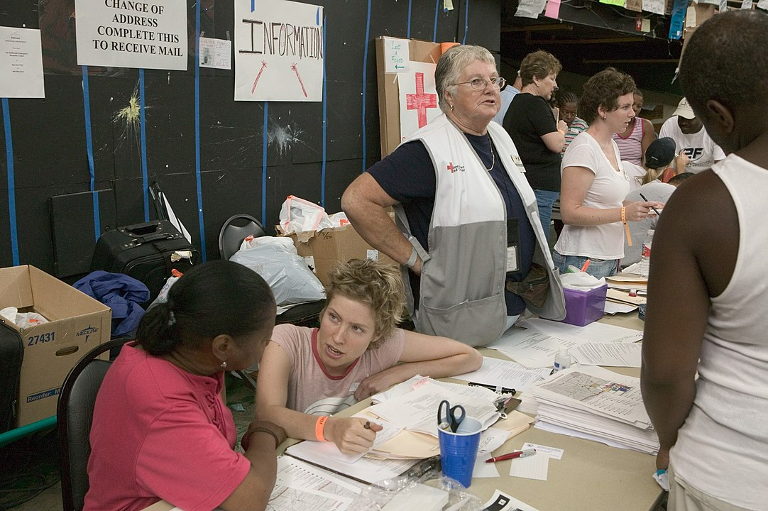While governors and mayors across the nation lead on the COVID-19 public health response, we are calling on civic leaders to begin economic recovery planning immediately. And to be clear: the recovery from COVID-19 must be as robust as the $4 trillion in backstops for Wall Street. It must be sustained and go the distance to support families and small businesses until they have fully recovered. If we allow ourselves to think big on recovery — just as the Federal Reserve is willing to backstop corporate America to no end — we can emerge from this crisis as a more resilient nation.
This national crisis calls for a new model for economic disaster recovery. We propose a new strategy ‘resettlement in place’ – it is based on best practices in refugee resettlement and social intelligence, a model to harness local data and lessons learned from previous disasters, including Chicago’s response to Hurricane Katrina. While the pandemic will not force people to evacuate or flee to a new land, most people across our state will be strangers to a new economic reality.
In 2005, the State of Illinois welcomed 10,000 Hurricane Katrina evacuees from the Gulf Coast. The lead agencies, based in Chicago, had a long history in refugee resettlement. In refugee resettlement, agencies work to create an intense period of support by providing housing, employment, and medical and mental health services. Whereas traditional disaster relief agencies think in terms of cots, blankets, and emergency shelter, the Chicago agencies provided these resources and planned for the long-term. This was a departure from the norm. For these reasons, this model has been recognized widely for its innovative thinking.
Now we must bring this model to a national scale.
As job losses mount — 10 million and counting — we call on federal, state, and local resources to start the recovery planning now; to develop a similar model to provide wrap-around support to a much broader portion of America. Doing so will set up people and small businesses for sustainability in the long-term.
Today, we are taking extraordinary measures to shelter-in-place, to limit the spread of COVID-19, and avoid overwhelming our hospital systems.
We must also act today to address financial instability and inequality, as we most certainly will overwhelm our already weakened social safety-net in the coming weeks and months. And there is no system in place that can handle the needs that are coming.
So, what does resettlement-in-place recovery look like?
Far too often, after a disaster or economic crisis, working people are hurt the most and helped the least.
Today we must flip this model on its head.
The United States has spent $1 trillion on disaster spending since 1980. Resettlement in place is based on lessons from disasters spanning a century, and it is a true long-term recovery model.
The federal government must provide cash directly to people and small businesses on a regular basis, as long as this crisis lasts. Next, the federal government must cancel student and medical debt. Then, unrestricted aid must flow to states and cities. In turn, states and cities must use these resources to create an intensive support system around housing, jobs, and cash transfers for affected people and communities.
And finally, this is a moment for governors and mayors to think big. This is a moment for transformation. Just as President Roosevelt’s New Deal rewrote the rules to manufacture a middle class, our situation today calls for similar thinking. We need real public options for healthcare, childcare, and banking. Instead of allowing banks and corporations to extract wealth from communities, we should develop programs to create wealth within our communities.
We mustn’t underestimate the scale of the recovery that is required, and we can’t wait for the curve to flatten to begin thinking about what comes next. Forty years of savage inequalities, deregulation, government austerity, and an economy generating an endless supply of low-wage jobs was America’s underlying sickness leading up to this pandemic.
We have incredible leaders stepping up at the state and local level to fill the moral and leadership deficit created by the White House. This should give us all hope, regardless of party affiliation.
As we take the necessary and extreme measures to fight the virus and its spread, we must also take equal steps to plan for the recovery.





